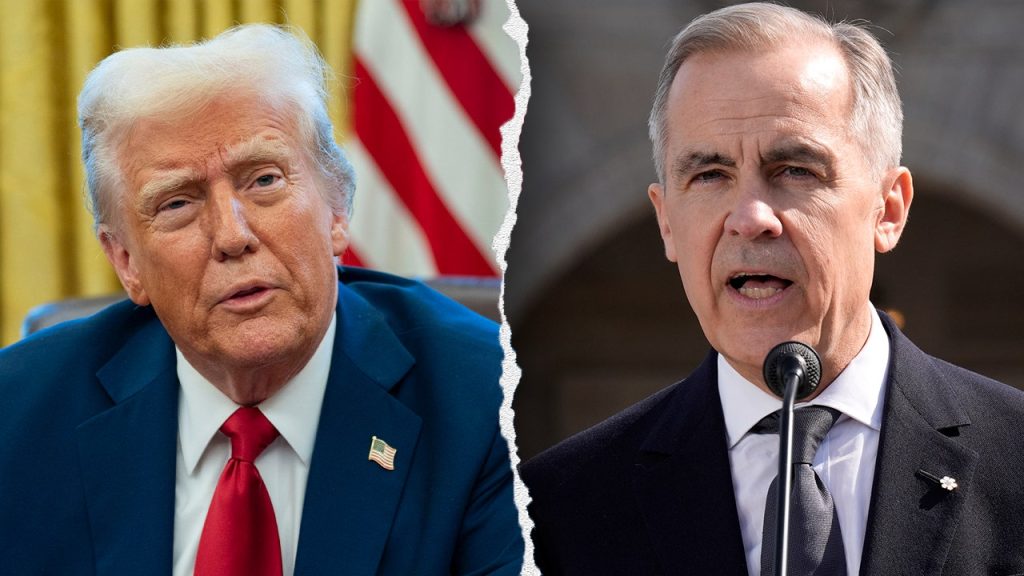In a significant political shift, Canada’s Liberal Party has emerged victorious in the recent general election, largely attributed to external influences, particularly the rhetoric of U.S. President Donald Trump. Political analysts argue that Trump’s controversial remarks about Canada played a crucial role in solidifying public support for Liberal leader Mark Carney. Carney’s party won a minority government, indicating a continued preference among Canadians for Liberal policies over Conservative alternatives.
| Article Subheadings |
|---|
| 1) The Context of Canadian Politics |
| 2) Trump’s Role in the Election Outcome |
| 3) Election Results and Voter Turnout |
| 4) Future Implications for Canadian Governance |
| 5) Summary and Reflection |
The Context of Canadian Politics
As the political landscape of Canada evolves, understanding the context in which this election took place is essential. The country has seen considerable instability in its political milieu, characterized by shifting party allegiance and public sentiment. The previous leader, Justin Trudeau, resigned amidst disapproval of his policies, paving the way for Mark Carney to lead the Liberal Party in this election. Carney’s approach focused on economic recovery and stability, promising to alleviate the strains invoked by recent political debates, particularly those influenced by Trump. Although traditionally, Canadian politics operates independently of U.S. influence, recent events have shown how intertwined these two countries’ political climates can be.
Trump’s Role in the Election Outcome
The impact of Donald Trump on Canada’s political fabric has been a topic of debate among analysts. Trump’s statements regarding the potential annexation of Canada stirred fears among voters, prompting them to favor Carney’s Liberal Party, which positioned itself as a calming force against external threats. Political experts, including Professor Christopher Adams, contend that Trump’s interventions were a double-edged sword. While they contributed to Liberal cohesion, they also exposed vulnerabilities within the Conservative Party led by Pierre Poilievre. Poilievre’s struggle to pivot his campaign in response to Trump’s provocations ultimately proved detrimental, with his party unable to effectively counter the rising Liberal sentiment.
Election Results and Voter Turnout
The election concluded with a remarkable voter turnout exceeding 19.5 million Canadians. Carney’s Liberals secured 169 of the 343 available seats, translating to a 44% share of the popular vote, while the Conservatives, despite their prior momentum, garnered 41% and 144 seats. The results highlighted a significant shift in public opinion, with many Canadians rejecting Poilievre’s narrative that the country was “broken.” This sentiment was partly fueled by lingering fears stemming from Trump’s comments, ultimately leading to public preference for a government perceived as capable of navigating external pressures.
Future Implications for Canadian Governance
With Carney now at the helm, the focus shifts to how this minority government will operate amidst a divided Parliament. Carney faces multiple challenges, including re-establishing Canada’s international stature and addressing domestic concerns such as economic development and public welfare. The upcoming royal visit from King Charles III is seen as a strategic move to reinforce national unity against the backdrop of Trump’s provocations. Carney’s policies, coupled with potential collaborations with the opposition, could be pivotal in shaping the legislative landscape moving forward. Poilievre has announced his intention to contest a byelection, attempting to reclaim his leadership role amid an evolving political atmosphere.
Summary and Reflection
As Canada’s political climate continues to evolve, the repercussions of this election will resonate beyond immediate party victories. Trump’s unconventional influence on foreign politics has raised questions about sovereignty, international relations, and national identity. Carney’s victory embodies Canadian resilience against external pressures, and how his administration navigates this unique political landscape will likely set the tone for future elections. Analysts suggest that the newfound unity within the Liberal Party, catalyzed by fears stemming from American politics, positions them favorably as they explore policies that advocate economic growth and social stability.
| No. | Key Points |
|---|---|
| 1 | Trump’s remarks incited fears among Canadians, boosting Liberal support. |
| 2 | The Liberal Party’s win reflects a more favorable opinion toward their proposed policies. |
| 3 | Poilievre struggled to alter his campaign effectively in response to shifting sentiments. |
| 4 | High voter turnout suggests increased public engagement in the election process. |
| 5 | Carney’s government will need to address economic and social challenges ahead. |
Summary
Overall, the recent Canadian election is a vital reflection of how external factors such as U.S. political discourse can significantly influence domestic politics. The Liberal Party’s success under Mark Carney highlights a shift in public sentiment favoring stability and perceived strength in leadership. As the political atmosphere continues to evolve, the relationship between Canada and the U.S., particularly amidst Trump’s controversial rhetoric, will remain a focal point of governance and public policy.
Frequently Asked Questions
Question: How did Trump influence the Canadian election?
Trump’s controversial statements regarding the annexation of Canada created a climate of fear among voters, leading many to support the Liberal Party as a defense against perceived threats.
Question: What were the election results for the Liberal Party?
The Liberal Party, under Mark Carney, won 169 out of 343 seats in the House of Commons, securing 44% of the popular vote during the recent election.
Question: What are the future challenges for Carney’s administration?
Carney’s government will need to tackle significant issues such as economic growth, public welfare, and maintaining Canada’s sovereignty amidst external political pressures.


